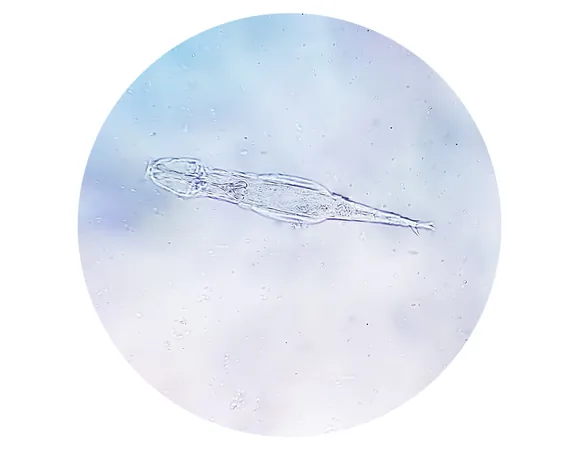
Shocking Link Between Parasitic Infection and Cervical Cancer Revealed!
2025-04-16
Author: Rajesh
New Research Uncovers Alarming Connections
In a groundbreaking study presented at ESCMID Global 2025, researchers have unveiled a startling connection between Schistosoma haematobium, a parasitic infection impacting millions globally, and heightened cancer-related gene activity in the cervical lining. This revelation sheds new light on how a commonly overlooked parasitic disease could escalate the risk of cervical cancer at the molecular level.
Understanding Schistosomiasis and Its Risks
Schistosomiasis is a widespread parasitic disease particularly rampant in areas lacking clean water and sanitation. Schistosoma haematobium infects over 110 million individuals worldwide, by infiltrating the urinary and reproductive tracts. While its role as a risk factor for bladder cancer is recognized, its connection to cervical cancer was largely mysterious until now.
Key Findings from the Study
In this illuminating study, researchers examined cervical tissue samples from 39 Tanzanian women—20 infected with S. haematobium and 19 healthy individuals. After receiving treatment with praziquantel, samples were taken before and 4 to 12 months post-treatment. By employing RNA sequencing and gene expression analysis, they uncovered cancer-related pathways triggered by the infection.
The findings revealed nine genes expressed differently between infected and uninfected women. Notably, post-treatment, 23 genes exhibited changes in those who cleared the infection, while 29 genes differed between those post-treatment and those never infected.
Cancer-Linked Genes Identified
Among the nine significantly altered genes, four are directly linked to cancer: 1. **BLK proto-oncogene**: A tyrosine kinase that can lead to tumor formation when dysregulated. 2. **Long Intergenic Non-Protein Coding RNA 2084**: A crucial prognostic marker in head and neck cancers. 3. **Trichohyalin**: Known for its role in keratin complex formation and upregulation in certain cancers. 4. **TCL1 family AKT coactivator A**: Promotes survival and proliferation of cells related to lymphomas.
Concerning Post-Treatment Changes
After treatment, researchers noticed an activation of cancer-related biological pathways which could be detrimental, including those linked to inflammation and tissue remodeling. Alarmingly, there was a reduction in genes responsible for maintaining cervical tissue integrity, which could jeopardize women by facilitating Human Papillomavirus (HPV) infections— a significant contributor to cervical cancer.
Calls for Urgent Monitoring and Awareness
Dr. Anna Maria Mertelsmann, the lead author from University Hospital Zurich, emphasized the importance of this research. "These findings imply that treatment might leave women even more susceptible to cancer processes in the cervix," she highlighted. She pointed out the critical need for ongoing monitoring of women diagnosed with S. haematobium.
Moreover, she suggested that integrating anti-inflammatory or immune-modulating therapies could mitigate post-treatment risks. Enhanced HPV vaccination efforts are also pivotal in reducing cervical cancer vulnerabilities among women with schistosomiasis.
Future Research Directions
This study marks a crucial first step in unraveling the complex relationship between S. haematobium and cervical cancer. Ongoing research involving 180 women over 12 months is underway to solidify these findings. The potential long-term impacts of schistosomiasis on HPV infections will be further explored, aiming to better understand cervical cancer risks in affected women.


 Brasil (PT)
Brasil (PT)
 Canada (EN)
Canada (EN)
 Chile (ES)
Chile (ES)
 Česko (CS)
Česko (CS)
 대한민국 (KO)
대한민국 (KO)
 España (ES)
España (ES)
 France (FR)
France (FR)
 Hong Kong (EN)
Hong Kong (EN)
 Italia (IT)
Italia (IT)
 日本 (JA)
日本 (JA)
 Magyarország (HU)
Magyarország (HU)
 Norge (NO)
Norge (NO)
 Polska (PL)
Polska (PL)
 Schweiz (DE)
Schweiz (DE)
 Singapore (EN)
Singapore (EN)
 Sverige (SV)
Sverige (SV)
 Suomi (FI)
Suomi (FI)
 Türkiye (TR)
Türkiye (TR)
 الإمارات العربية المتحدة (AR)
الإمارات العربية المتحدة (AR)